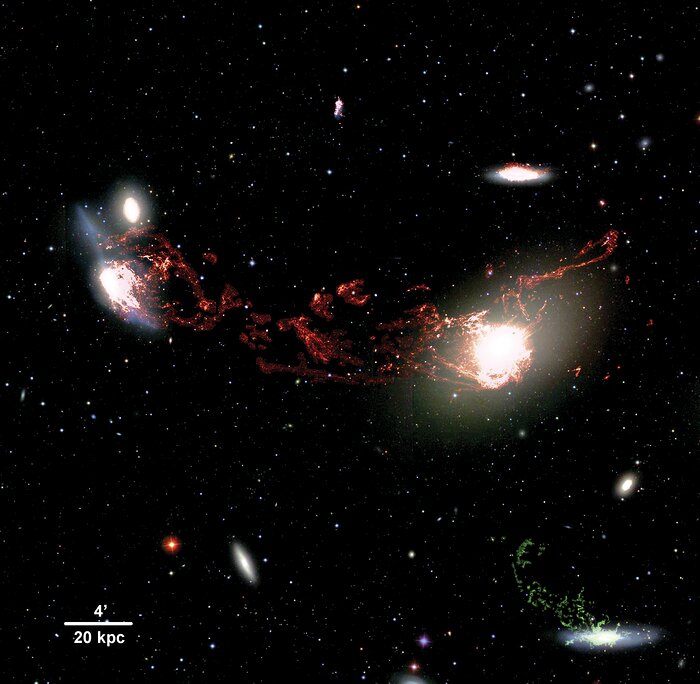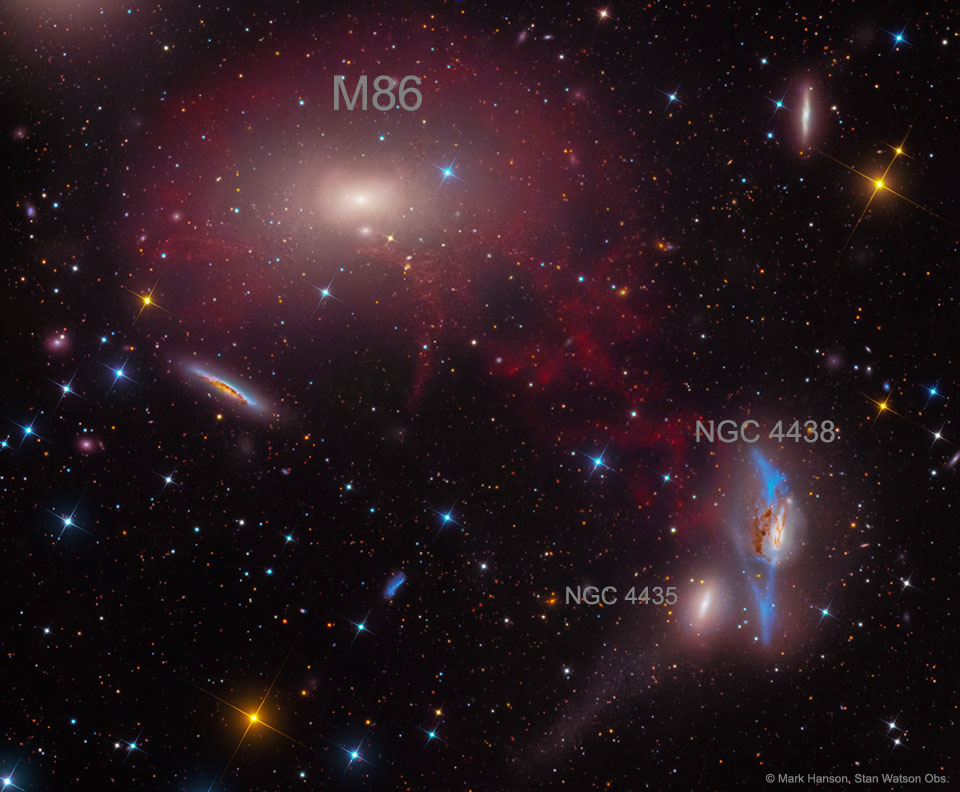Yes, I like it!

The colors are so deep and rich that they almost remind me of a 19th century landscape painting!
So yes, I could almost frame this image and put it on my wall! I must say, however, that the resolution of the picture isn't that great. Because of that, it's not always immediately obvious if those little lights in the background are galaxies or stars.
Compare the resolution of the background objects in the APOD with the resolution of the background objects in this Hubble image (of course, it's never fair to compare an amateur image with picture taken by Hubble!):
But you know what? The center of the smaller galaxy, NGC 4435, is so much better resolved in the APOD than it is in the Hubble image! Woohoo! Way to go, Mike Selby!
 (And look how "dead" the Hubble image colors are.)
(And look how "dead" the Hubble image colors are.)
But the APOD made me pay attention to something in NGC 4438 that I've never paid attention before:
That fuzzy blob of light sure looks like a small galaxy superimposed on NGC 4438, or else it looks like a Virgo Cluster galaxy seen right behind NGC 4438. Cool!
One thing that Hubble has revealed, that is not visible in the APOD, is that the black hole of NGC 4438 is blowing bubbles:
Like a kid chewing gum! Fancy that!
Let's change the subject a little.
APOD Robot wrote about NGC 4438 and NGC 4435:
The more massive NGC 4438 managed to hold on to much of the material torn out in the collision, while material from the smaller NGC 4435 was more easily lost.
I think the gaseous material of NGC 4435 may have been lost even before its
close encounter with NGC 4438. Members of fairly dense galaxy clusters easily lose their gas over time, so NGC 4435 may well have been "barren" before it almost collided with NGC 4438. Just look at the central feature of the Virgo Cluster known as Markarian's Chain, which NGC 4435/NGC 4438 are members of. Most galaxies in Markarian's Chain are either elliptical galaxies or lenticulars, both of which are poor in gas.
And NGC 4438, which has held on to some of its gas, is in the process of losing it:
Isn't Mark Hanson's picture of M86 and NGC 4438 gorgeous? It seems to suggest that the entire giant elliptical galaxy M86 is aglow with red hydrogen alpha light. I'm not sure that this effect is real, because I haven't seen it in any other pictures, but clearly gas
is streaming from NGC 4438 onto elliptical galaxy M86.
So eventually, NGC 4438 will be as barren and devoid of gas as its hapless partner, NGC 4435. But for now, let's enjoy the funny shape of this cosmic Eye in the Sky!
Ann
 The Eyes in Markarian's Galaxy Chain
The Eyes in Markarian's Galaxy Chain







